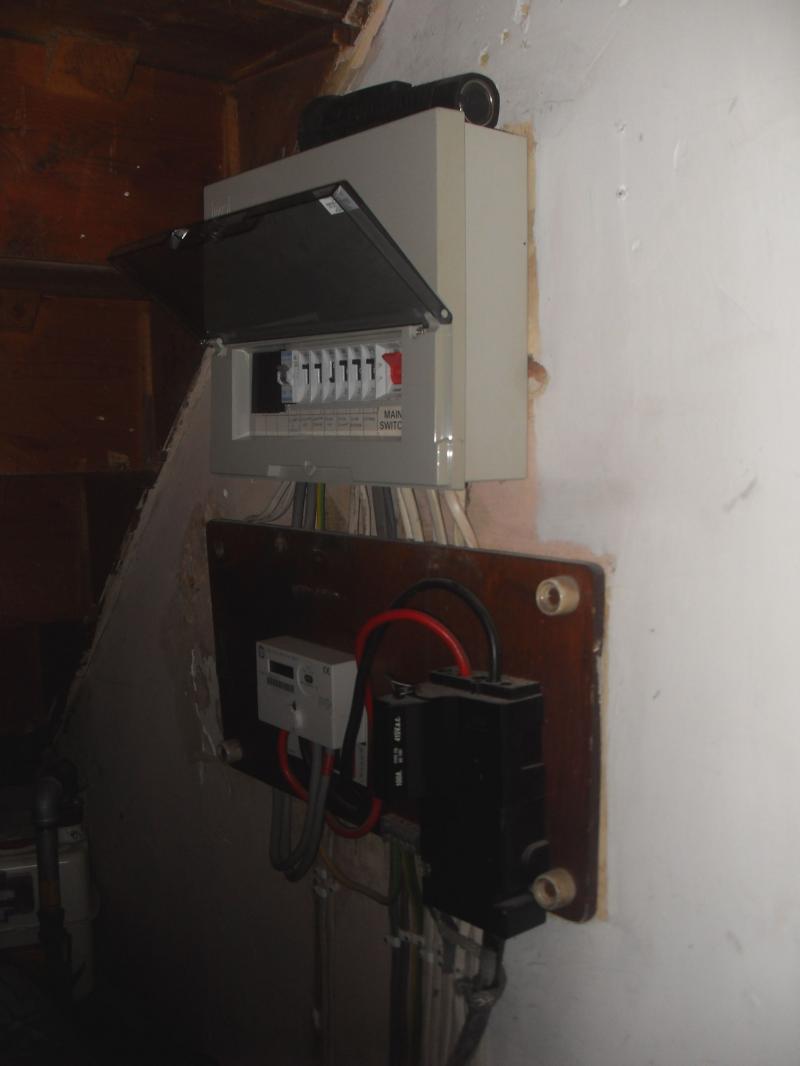Having done Part P I am having a go at upgrading my electrics but have realised that although having the theory is fine the practicalities are more challenging. I've started with the first floor which seems to be laid out as follows:- starting from the dormer room in the roof there is a radial circuit of four sockets. The originating socket has two other cables going down to the first floor. One serves three sockets and ends. The other serves three sockets and (presumably, as the room in question is wooden floored and I haven't checked yet) goes straight back down to the fuse box.
I have two questions - firstly, is this an acceptable setup as it seems to be three separate radials originating out of one socket and there are thirteen sockets altogether ? Secondly, I have five pairs of 2.5mm coming out of the fusebox and under the top of a wooden plate with the fuse and meter on it (up, down, cooker, garage and kitchen) but only four pairs coming out of the bottom of the wooden plate going under the floor. Not sure where the fifth pair goes ? If the up and down circuits are radial as appears to be the case then there should only be eight cables altogether anyway (three pairs and two radial).
I have two questions - firstly, is this an acceptable setup as it seems to be three separate radials originating out of one socket and there are thirteen sockets altogether ? Secondly, I have five pairs of 2.5mm coming out of the fusebox and under the top of a wooden plate with the fuse and meter on it (up, down, cooker, garage and kitchen) but only four pairs coming out of the bottom of the wooden plate going under the floor. Not sure where the fifth pair goes ? If the up and down circuits are radial as appears to be the case then there should only be eight cables altogether anyway (three pairs and two radial).




